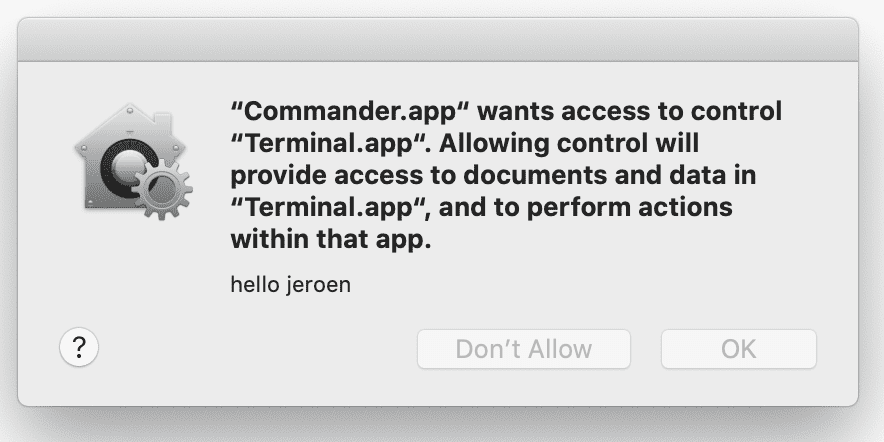Executing commands in the Terminal from Swift
I’ve been working on a little MacOS app which is supposed to spawn a Terminal and execute commands in it. As I was digging through Process and NSTask I wasn’t able to find a way to do both of these actions. However through some embedded AppleScript, you can get it to work.
The below code will achieve exactly that:
func execute(command: String) {
let script = """
tell application \"Terminal\"
do script "\(command)"
end tell
"""
var error: NSDictionary?
if let scriptObject = NSAppleScript(source: script) {
let output = scriptObject.executeAndReturnError(&error)
if (error != nil) {
print("error: \(String(describing: error))")
} else {
print("output: \(String(describing: output.stringValue))")
}
}
}If you now execute this, you’ll see an error similar to this in your console:
error: Optional({
NSAppleScriptErrorAppName = Terminal;
NSAppleScriptErrorBriefMessage = "Not authorized to send Apple events to Terminal.";
NSAppleScriptErrorMessage = "Not authorized to send Apple events to Terminal.";
NSAppleScriptErrorNumber = "-1743";
NSAppleScriptErrorRange = "NSRange: {26, 55}";
})In order to grant these permissions, add the following to your info.plist:
<key>NSAppleEventsUsageDescription</key>
<string>hello jeroen</string>If you now trigger this behaviour again, you’ll be prompted with the following popup:
Note that this will only work if you don’t have Sandbox enabled. In order to disable the Sandbox, delete your .entitlements file.
Published 12 Jul 2020
